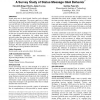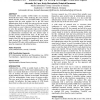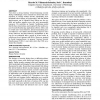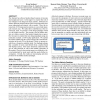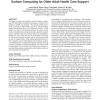CHI
2010
ACM
15 years 7 months ago
2010
ACM
End-user interactive concept learning is a technique for interacting with large unstructured datasets, requiring insights from both human-computer interaction and machine learning...
83
Voted
CHI
2010
ACM
15 years 7 months ago
2010
ACM
Although network bandwidth has increased dramatically, high-resolution images often take several seconds to load, and considerably longer on mobile devices over wireless connectio...
CHI
2010
ACM
15 years 7 months ago
2010
ACM
85
Voted
CHI
2010
ACM
15 years 7 months ago
2010
ACM
Automated teller machine (ATM) frauds are increasing drastically these days. When analyzing the most common attacks and the reasons for successful frauds, it becomes apparent that...
114
click to vote
CHI
2010
ACM
15 years 7 months ago
2010
ACM
In designing for engagement at a public multi-touch installation, we identified supporting multiple users and allowing for gradual discovery as challenges. In this paper, we prese...
84
Voted
CHI
2010
ACM
15 years 7 months ago
2010
ACM
Users have a strong tendency toward dismissing security dialogs unthinkingly. Prior research has shown that users' responses to security dialogs become significantly more tho...
CHI
2010
ACM
15 years 7 months ago
2010
ACM
78
Voted
CHI
2010
ACM
15 years 7 months ago
2010
ACM
This paper examines accessibility issues of surface computing with older adults and explores the appeal of surface computing for health care support. We present results from a stu...
84
Voted
CHI
2010
ACM
15 years 7 months ago
2010
ACM
When asked to draw, many people are hesitant because they consider themselves unable to draw well. This paper describes the first system for a computer to provide direction and fe...
87
Voted
CHI
2010
ACM
15 years 7 months ago
2010
ACM
The distribution of task time data in usability studies is positively skewed. Practitioners who are aware of this positive skew tend to report the sample median. Monte Carlo simul...

